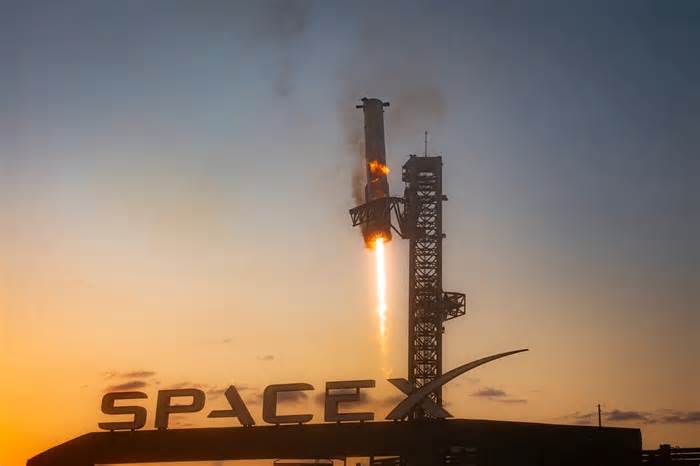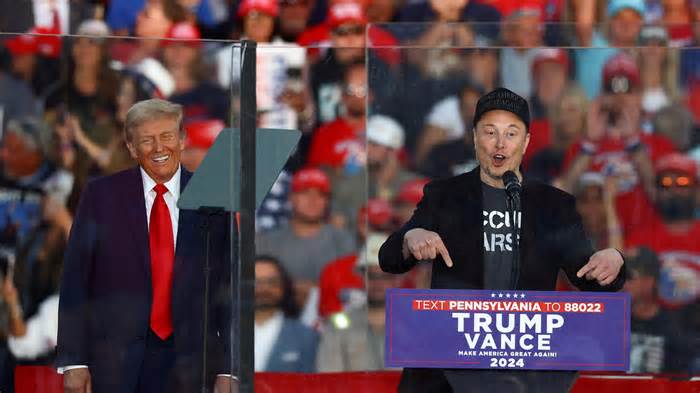
Starlink’s race for space
- by developingtelecoms.com
- Nov 13, 2024
- 0 Comments
- 0 Likes Flag 0 Of 5

Elon Musk
Starlink’s ascension has made waves in the satellite sector across the last year – in particular, the number of operating licences it has snapped up in emerging markets feels like the satellite equivalent of a land-grab.
While the effectively endless resources of SpaceX owner Elon Musk have certainly helped, Starlink’s success is rooted in its innovative approach to LEO satellite production - which has made the technology more economically viable – as well as its strategic targeting of emerging markets. Its rise has ruffled the feathers of satellite competitors and terrestrial operators – but is Starlink really set to take over the world in the same way that its LEO fleet covers the planet? We spoke to some leading industry analysts to learn more.
Analysys Mason Research Director, Lluc Palerm-Serra, explains that it’s important to understand the background of the satellite industry. “Its main business was video, and it had a straightforward business model – signing with a distribution platform for the lifetime of the satellite, then launching and operating it. It was a secure, risk averse business, so innovation was fairly slow – development cycles were long, with satellites lasting for 15 years. There was little incentive to innovate as the clients were very long-term.
“As the sector evolved towards data markets, with the emergence of GEO HTS (high throughput satellite), the main use became frequency reuse – the model used by companies such as ViaSat and Hughes, were instead of having one large beam covering the entire US, there are multiple smaller beams. These helped to develop new markets for consumer broadband, which was a big step forward for the industry, but development cycles remained long – satellites still lasted for 15 years, with around five years between generations.”
Andrew Cavalier, Senior Research Analyst at ABI Research, notes that there have been LEO systems in orbit for decades, such as Iridium or Globalstar, and they've targeted very specific markets as a result.
“A lot of the incumbents particularly like to go into geostationary orbit, as they can use more powerful satellites that way to provide broadband connectivity to fixed areas. Generally, this makes sense as a model, because you only need a small number of ground stations, you can park the satellite in one spot, and it focuses on one geography and provides coverage to that entire area. A LEO satellite meanwhile is small and travels quickly, orbiting the Earth several times in a day, with a very small beam. Getting something that's moving really quickly to match up to its service area can be quite difficult with only so many satellites. As a business model, it’s traditionally quite CAPEX-heavy, since it requires the manufacture and launch of a lot of satellites.
“All this made a LEO play not the optimal solution for providing a broadband connectivity service, and LTE basically blew it out of the water – it’s much cheaper to do terrestrial, and so satellite’s been relegated to finding a business case right for its expensive existence. Combined with launch, the cost to deploy and operate these satellites, the cost of connectivity never really made it a strong, sustainable solution.”
Enter Starlink
Palerm-Serra says that Starlink has been very disruptive because of their launch capability; every launch uses a slightly different launcher from the previous one. For every new launch, SpaceX is innovating on the launcher side, and that has been translated to the satellite design as well. LEO satellites have a much shorter lifespan than GEO, so Starlink has been able to innovate much faster on the design side - almost every batch of satellites that Starlink launches to space is different from the previous one, with some new innovation or enhanced capability. That level of technology iteration and innovation was unknown in the satellite industry.
“LEO constellations were previously perceived as unfeasible, not just because of their characteristics - they have to have global footprint, you need to launch a lot of satellites to make it work, to have continuous coverage, but also on the ground side, you need antennas that track the satellite. On GEO you can have a fixed parabolic antenna, because the satellite seems to be stationary from a terrestrial perspective, but on LEO, since the satellite is passing over you every few minutes, the antenna needs to track the satellite.
“That's a very complex piece of technology, and everyone thought that, that was going to kill the business model for Starlink, because tracking antennas were super expensive, but again, Starlink was able to innovate very fast on that front and produce terminals that were cheap enough for mass deployment. Obviously, they had almost infinite funding… They needed that funding to innovate and scale, so it was an innovative and virtuous cycle that no one else in the industry could imitate.”
Starlink could finance the debt, which meant they could subsidise the terminal – in its initial stages, Starlink’s terminal cost more than $2,000 but they sold it at $500. That allowed them to scale sales, which in turn eventually helped reduce the cost of the terminal. Obviously they are putting a lot of pressure on the legacy players in terms of pricing, level of service, and capabilities, and that explains why they have been able to disrupt the market so rapidly.
“It's a completely different way of building satellites: if you look into a GEO satellite, it's almost custom designed - every satellite is different, there is no batch production, it's like an artisan piece, so it's super custom made. But the other hand, for Starlink, it's batch production product with an industrialized kind of approach there.”
According to Cavalier, a key differentiator is the fact that the second stage boosters, known as Falcon Nines, are partially reusable. Previously, these boosters have been discarded into space, but Starlink is able to bring them back and reuse them, driving down the cost of launch.
“Instead of having to build a new rocket every time to launch a set number of satellites, [Starlink] reuse the same booster over and over - that has really changed the economics of how much it costs to send up the payload into space, not to mention the actual success factor. Most launches have around 96 to 97% success rate, and it's still the case with the Falcon Nine rockets.”
It’s now possible to launch four to five rockets each month, carrying around 20 satellites, meaning it’s now possible to expand a LEO fleet relatively rapidly and cheaply given that the launch is the most significant cost of getting it into space.
“When you look at some of these other players who still have their systems that have been around for 10-15, years, they're not ruling out LEO - it's very expensive to ask the government to help pay for that, because it's always been government funded. And then they want to commercialize, the market’s too small because of terrestrial, then they come around and want to sell it back to government.”
Meanwhile, Starlink is funded by Musk and targeted directly at emerging markets with a large unconnected population. There has been pushback from both operators and regulators in these regions however, with Kenya’s Safaricom calling for Starlink to work with terrestrial providers rather than compete directly with them.
Nitesh Singh, Managing Director for Communications, Media & Technology Lead at Accenture South Africa, notes that many markets are keen for regulators to get more involved in the process as the company represents a disruptive threat to operators and hyperscalers.
“It will [impact them] but they can be smart. They know it's coming - they need to augment what they think about Starlink. It's part of the ecosystem now - gone are the days where you can ignore anyone that's not part of the ecosystem. No one saw this five years ago, and satellite services are not new - but the cost to deploy these things is new, which is getting cheaper.”
Satellite predates radio access networks, but back in these days the cost was prohibitive, but this is now reducing. Singh notes that while Starlink’s services aren’t yet ready for the mass market - but when they are, this will change the game.
Cavalier notes that Starlink is in discussions with operators globally about forming local partnerships as it requires the expertise of systems integrators and CSPs – while Starlink does diverge from typical incumbent satellite strategies by offering direct to consumer, its real competitors are the satellite players that are often already present in these markets. This is where he believes the real objections lie.
“In the case of Safaricom, one of their big partners is AST Space Mobile, a big competitor to SpaceX. It wouldn't be surprising if AST said, they're our biggest competitor, you're already in bed with us, so why are you talking with them? There's always a bit more than meets the eye when it comes to certain companies coming up and telling their regulators that there's interference, or some kind of a spectrum battle potential. In India, they’re talking about allocating spectrum instead of auctioning it off – but they’re a big supporter of OneWeb, another competitor of SpaceX.
“When they're saying, you can't come into this market, they're going to disrupt all these things - I doubt that it's just that. There's always going to be some other deeper part of this, whether that means they're already working with a competitor, or maybe that they want to try to force SpaceX to go through them. It comes down to the intricacies of each of the companies that's in play [in each market]. It's nothing to do with disruption of the service - terrestrial LTE is still going to be far cheaper and better than satellite. The cost can come down eventually, but it's still 10 times cheaper and way faster to use terrestrial so I don't think these terrestrial CSPs are really worried about a technological competition. It's more of a business play.”
Palerm-Serra agrees, arguing that satellite will never be a substitute for terrestrial for the mainstream client. “In the case of Kenya and developing markets, where you have ultra rural populations or very hard to reach locations - Central Africa or the middle of the Amazon has places like that where you are very remote that is very difficult to deploy fibre backbone. That's where satellite is the perfect solution.”
However, in markets such as the US and Europe, such areas are a tiny percentage of the total network – satellite cannot compete. The supply from Starlink and satellites in general is limited, so consequently, the number of subscribers that they can serve is also limited. LEO constellations can only provide ‘line of sight’ coverage, which coupled with their fast orbits means that they may still only be able to address a relatively small percentage of the overall network. “For Nigeria or Kenya for example, Starlink in particular will only be able to serve a limited number of subscribers, so it's not a huge risk to these mobile operators, but for the last 5-10% of the network they might see some competition from Starlink and others.”
Palerm-Serra adds that while Starlink has gained a first-mover advantage to a degree, it faces significant competition from the imminent launch of Amazon’s Kuiper as well as established players such as OneWeb and Telesat Lightspeed. However, given the pace of their innovation he expects Starlink to remain competitive. Cavalier concurs that a lot of new networks are coming online in the next 10 years, with China launching satellites for their mega constellation.
“For [Starlink] to compete in developing markets building those inroads now is going to be key for when they send up more capacity, more satellites later, because then they've already got the market. They can enter the market for cheap or for free, but 5-10 years down the road, when economics start improving for that region, they have connectivity. There's more money being generated, they can start charging. Why would people switch to another satellite operator if they've already been working with one for 10 years? I think that's really what is at stake here. They realise there's going to be a lot of competition, and they want to get in now.”
MORE ARTICLES YOU MAY BE INTERESTED IN...
Please first to comment
Related Post
Stay Connected
Tweets by elonmuskTo get the latest tweets please make sure you are logged in on X on this browser.
Sponsored
Popular Post
Tesla: Buy This Dip, Energy Growth And Margin Recovery Are Vastly Underappreciated
28 ViewsJul 29 ,2024






 Energy
Energy



















